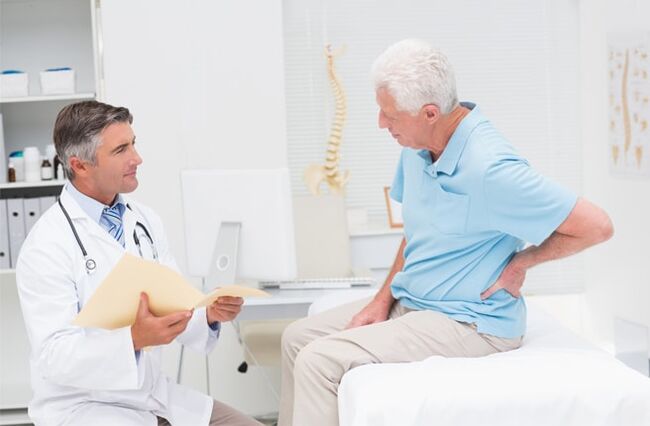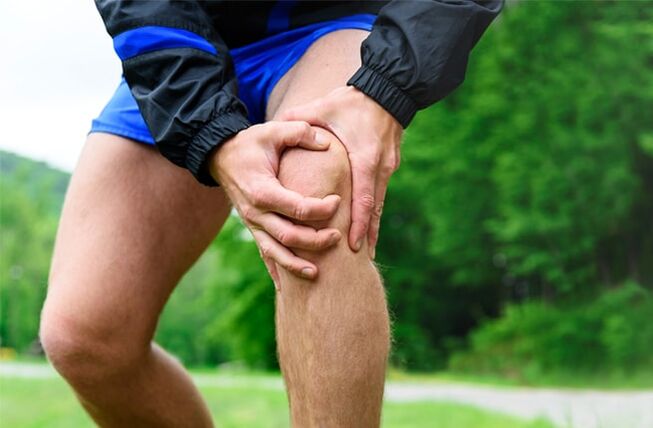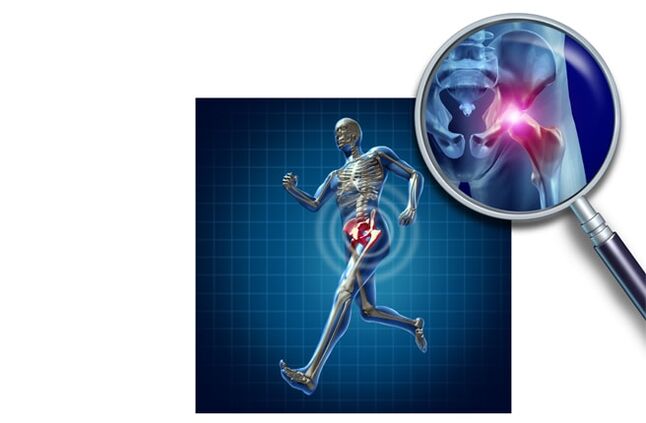Osteoarthritis (osteoarthritis or deforming osteoarthritis (DOA) or deforming osteoarthritis) is a disease of the joints in which the articular cartilage is affected in the initial stage, then the surrounding muscles, ligaments, nerves and also bone tissue are involved in the pathological process.

Osteoarthritis is a disease that develops for a variety of reasons. These include metabolic disorders, trauma, intoxication, etc.
Patients generally refer to any joint disease as "osteoarthritis" in which pain, restricted mobility and other complaints have been observed in the area of one or more joints, which is not always the case. Osteoarthritis and the pain associated with it arise as a result of the "aging" of the joints, due to the influence of various negative factors, however, the causes of joint pain can be infections and injuries, and in these cases we speak of other pathologies.
Osteoarthritis statistics
Up to 70% of patients at the reception of a general practitioner, therapist, neurologist, surgeon, rheumatologist complain of joint pain. The most common pain in the lower back and large joints (knees, hips). Worldwide, up to 70% of long-term disability cases are due to osteoarthritis. Quite a few patients - up to 10% of those who see a doctor for advanced osteoarthritis become disabled and need constant help. Osteoarthritis is one of the main reasons for a person's premature withdrawal from a full-fledged social life; in the statistics it is second only to coronary artery disease.
The likelihood of developing osteoarthritis increases with age: in people over 50 it occurs in 27% of cases, in older people over 70 the prevalence is 97%, which is due to the cumulative age-related stress on the joints and exhalationtheir normal function.

Causes and development
The main factor in the development of osteoarthritis is the malnutrition of the articular cartilage, which leads to its destruction. It is not so important why this happens (severe obesity, professional sports, work habits, hormonal disorders, congenital defects of the joints, etc. ), the result is the same:
- changes begin in the articular cartilage that lead to a loss of elasticity; Microcracks appear in the thickness of the cartilage;
- the blood supply to the joint is disturbed, the production of synovial fluid decreases, the joint mechanics change;
- then all structures of the joint, neighboring muscles, nerve endings are involved.
The listed degenerative diseases lead to the development of symptoms of osteoarthritis, and the disease "begins" at the moment when the constant mechanical load on the joint (or joints) becomes prohibitive and the processes of its destruction begin.
Osteoarthritis symptoms
In contrast to other joint diseases, osteoarthritis develops over many years, long-term and imperceptible to humans. The moment the body signals a problem in the joint with severe pain, the pathological process in it has already begun.
Pain is the main symptom of osteoarthritis (osteoarthritis), in the initial stage the pain is not very pronounced, weak, more comparable to symptoms. The unpleasant sensations in the joints that occur after exercise go away on their own without medical or medicinal intervention, but they are quickly felt and limit the usual mobility.
Pain can also occur at rest or at the very beginning of movement (the so-called "start-up"), for example in the morning after sleeping or after sitting for a long time during the day in a position during movementPatients faced with joint problems usually say that "stretching the bones", "waking up the joints" is necessary in order to get rid of the discomfort, which generally characterizes this condition fairly precisely.
Painful sensations arise not only from disturbances in the work of the joint itself. When all components of the joint, muscles and nerve endings are involved, the pain becomes multifaceted and unbearable: "shooting" along the nerve, spreading through the muscle. The blood flow to joints, nerves, muscles is disturbed, degenerative changes occur quickly in them.
Due to serious pathological changes in the joint and muscle tissue, temporary or permanent restrictions in joint mobility (contractures) develop. For example, in osteoarthritis of the hip joint, the extremity is shortened, the pelvis is "crooked" and the spine is curved.

The crunch in the joints at the initial stage is almost invisible, but as the disease progresses during movement, it becomes constant. This symptom worries patients with osteoarthritis psychologically even more than pain, as it indicates serious illnesses, especially aging of the body and the musculoskeletal system.
In the later stages of osteoarthritis, joint deformation occurs, which is accompanied by loss of all articular surfaces with curvature, bone growth, a decrease in synovial fluid, and joint subluxation.
Stages
Depending on the severity of the symptoms, a distinction is made between several stages of osteoarthritis.
In the first stage, pain is absent at rest and with moderate exertion, occurs only after high exertion (fitness, carrying heavy loads, running) or after a long static position. A person has no limitations and movement difficulties. No drug treatment is required.
In the second phase, the pain is pronounced and constant, arises quickly under the influence of provoking factors (long walking, physical activity), does not go away on its own. The patient is limited in movement, the mobility of certain joints is severely limited - knees, Hip and others. Medical assistance is required, a treatment regimen must be prescribed, including medication and non-drug methods.
In the third stage, the patient moves with difficulty, needs constant care, the pain is unbearable. Surgical treatment (endoprosthetics) and massive physiotherapy are usually necessary to restore quality of life.
Symptoms of osteoarthritis appear at a young age, and in this case it is necessary not to ignore them, but to consult a doctor. Timely treatment supports normal joint function and helps prevent the disease from progressing rapidly.

























